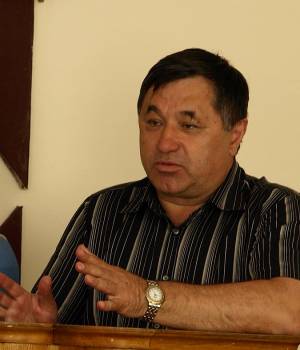Hazardous Impunity

A well-known environmentalist, Volodymyr Honcharenko, has died following a brutal and clearly targeted attack on 1 August. Mr Honcharenko was driving to his dacha when another car blocked its path and he was dragged out by several men and beaten. He died in hospital of his injuries.
The attack came four days after a press conference at which Mr Honcharenko warned of a “chemical time bomb” from 180 tons of chemically contaminated scrap metal being transported around Kryvy Rih in the Dnipropetrovsk oblast. The danger from the toxic load is enormous and could extend beyond Ukraine since there are grounds for fearing that the highly toxic material could end up in scrap metal exported abroad.
Whether this particular issue is linked with Mr Honcharenko’s murder should not be the subject of speculation, but of scrupulous investigation. Volodymyr Honcharenko, a member of the Academy of Engineering Sciences and Head of the NGO “For Citizens’ Right to a Safe Environment” is likely to have made other enemies through his hard-hitting and fully substantiated reports on radioactive, lead and chemical contamination, the quality of drinking water and more. He was critical of those willing to risk public health and safety for personal gain, as well as the often criminal negligence of officials who looked the other way.
On the other hand there has been silence over the scandal reported by Volodymyr Honcharenko on 27 July and now his voice has been silenced for ever. It is for the authorities to now demonstrate willingness to put an end to the silence and the impunity this generates. Real willingness to uncover and punish those responsible, not imitation, as seen in the “news” last week that the murder of journalist Vasyl Klymentyev had been “solved”. The name of the key suspect and the fact that he had been placed on the wanted list had been revealed early in 2011 making the whole exercise seem disturbingly aimed at misleading the public and fabricating non-existent achievements. At the press conference on 27 July 2012 Volodymyr Honcharenko warned of highly toxic heat exchangers which environmentalists fear could be mixed with other scrap metal and sold, possibly abroad. The heat exchangers come originally from Kalusz in the Ivano-Frankivsk oblast, and contain huge levels of the chemical hexachlorbenzol, . They were sold illicitly in 2005 to Ukr-Euro Litd which in 2008 tried to palm them off to a public stock company. This and later efforts have foundered because of the hazardous nature of the metal. Officials and those with a vested interest can be as silent as they like but every time workers have been given the material for cutting, they have ended up in hospital. This has then led to the frighteningly dangerous material being transported by truck through Kryvy Rih by a company with no transportation permit and in heat-wave conditions.
Volodymyr Honcharenko believed that the plan was to cut up the heat exchangers and mix small amounts with scrap metal, while probably burying the remains of the hexachlorbenzol in one of the quarries of the Saksahansk district. He warned that the likely site for cutting the heat exchangers was next to a reservoir which provides Kryvy Rih with drinking water. Dnipropetrovsk is of interest to metal traders because there is a freight port where metal is exported abroad. Turkey has already complained once, in 2011, that metal received from Ukraine was radioactive.
We can assume that other countries will not wish to turn a blind eye to such hazardous and criminal behaviour. Public attention is needed to ensure that neither Volodymyr Honcharenko’s murder, nor the terrible danger he exposed are quietly ignored





